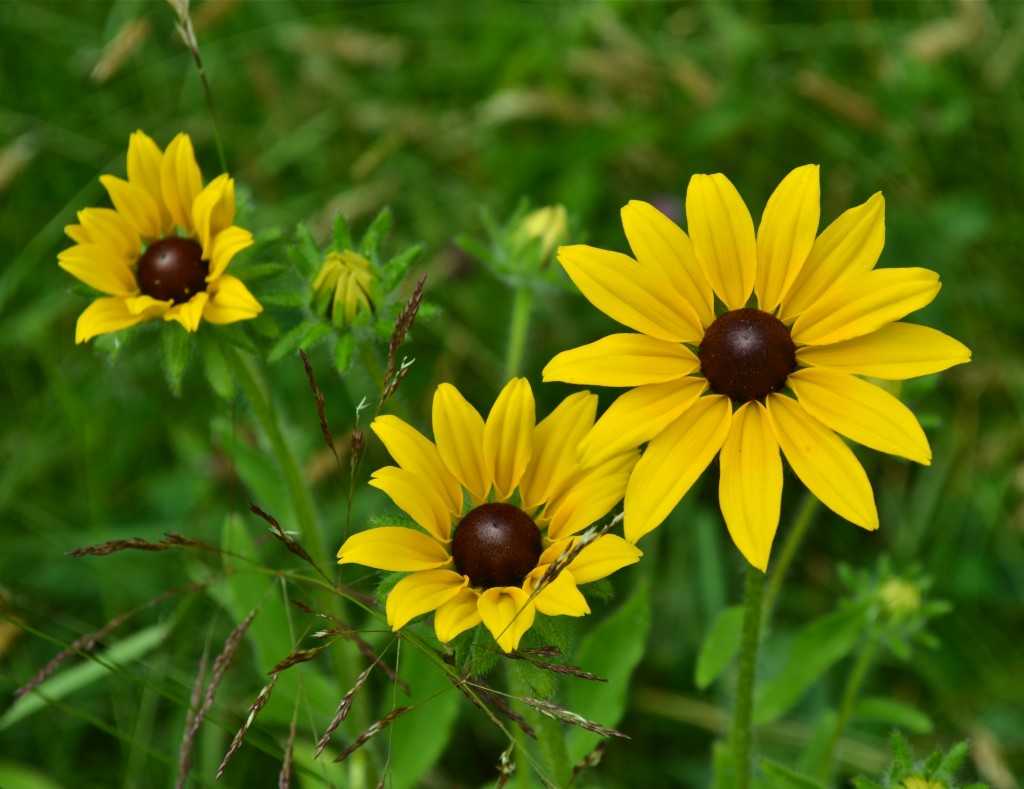 The roots were used for medicinal purposes– Ojibwas used it to treat snake bites. Aster family. Native to the Midwestern U.S. (a prairie flower!)
The roots were used for medicinal purposes– Ojibwas used it to treat snake bites. Aster family. Native to the Midwestern U.S. (a prairie flower!)
Black-eyed Susan, Yellow Ox-eye Daisy (Rudbeckia hirta)

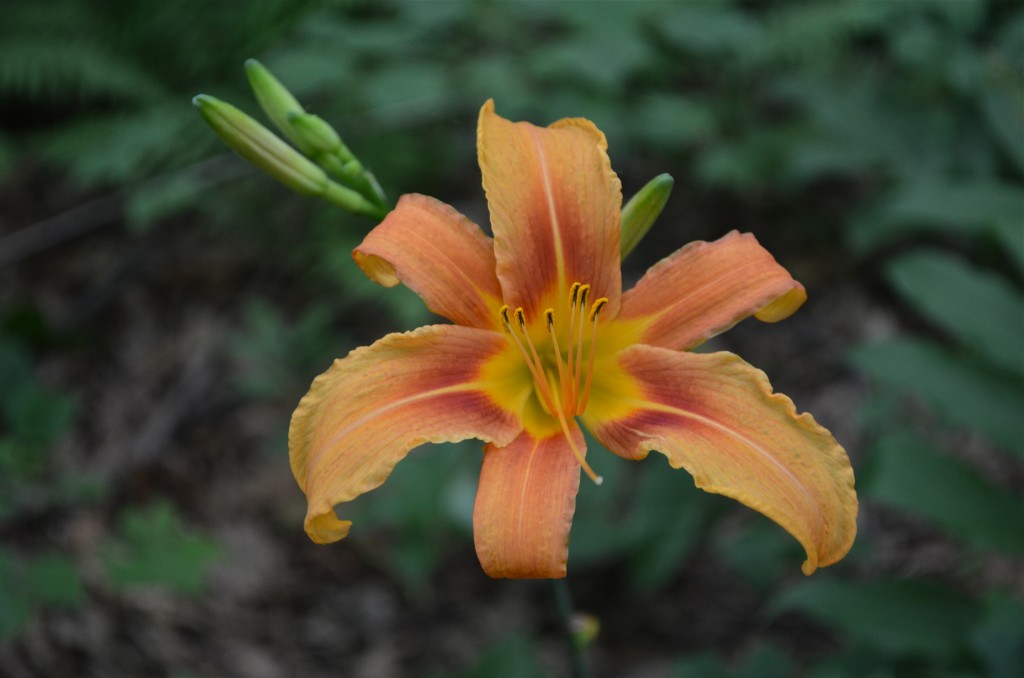 Introduced from Asia. Blooming period is about a month during midsummer, and each bloom lasts only a day. “Has been in cultivation for a long time and often outlasts the buildings that surround it and their inhabitants.” Lily Family. Thanks to Alert Flowerophile and Day Lily Queen Donna for pointing this out and assuring me it counts as wild.
Introduced from Asia. Blooming period is about a month during midsummer, and each bloom lasts only a day. “Has been in cultivation for a long time and often outlasts the buildings that surround it and their inhabitants.” Lily Family. Thanks to Alert Flowerophile and Day Lily Queen Donna for pointing this out and assuring me it counts as wild.
Orange Day Lily (Hemerocallis fulva)
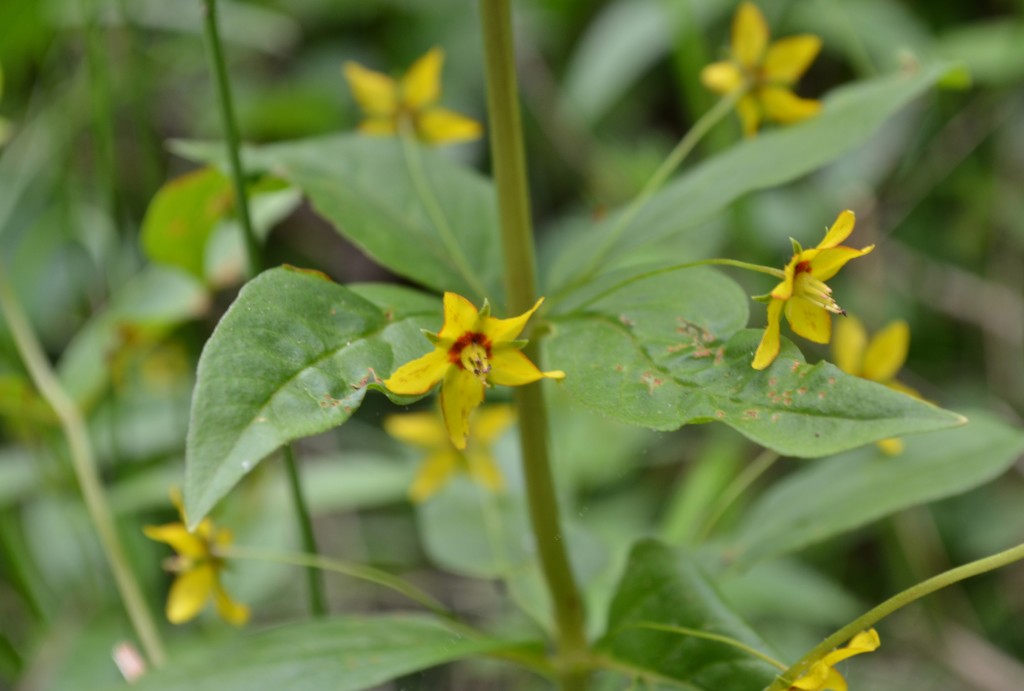 Photographed at Centennial but also growing in the Needham Town Forest. There is so much more to spring than tulips. Or violets. All these things I’ve been walking by all these years. Also you start to see how people were able to survive off the land, when they knew the possibilities and utilities of each plant. Primrose family. Native.
Photographed at Centennial but also growing in the Needham Town Forest. There is so much more to spring than tulips. Or violets. All these things I’ve been walking by all these years. Also you start to see how people were able to survive off the land, when they knew the possibilities and utilities of each plant. Primrose family. Native.
Whorled Loosestrife (Lysimachia quadrifolia)
This is a small ground creeper. The species name repens refers to its trailing habit. Will bear red berries. The blossoms occur in pairs, and both must be pollinated to result in a single berry. Evidently people grow this in their gardens for the green leaves and red berries in winter. Native vine.
Partridge Berry (Mitchella repens)
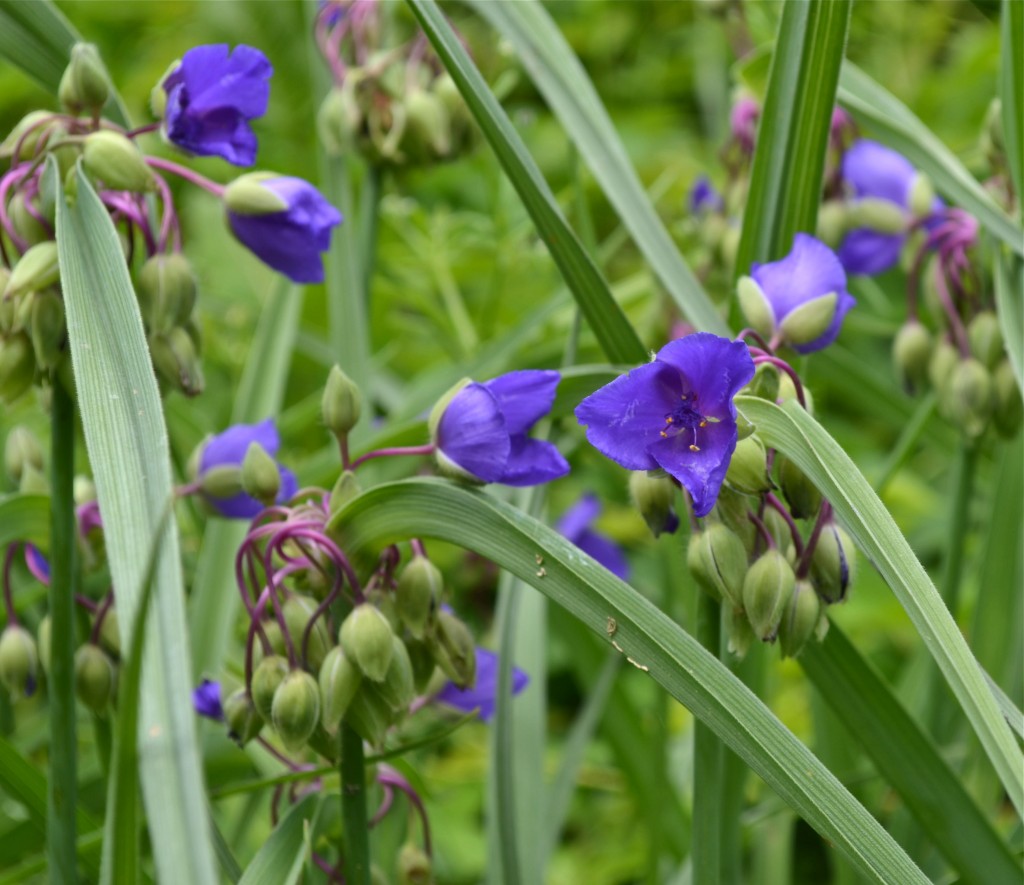 Each flower lives only one day, but each plant produces 20 or more flowers per stem. The sap has a viscous quality and can be stretched between your fingers like a thread of spider silk. Maybe this is where the name came from. Plus it’s also called Cow Slobber and I guess that could be related. The stems, leaves and flowers are edible, raw or added to stew. The flowers can garnish your salad! The spiderwort genus is named after John Tradescant, who was a gardener for King Charles I of England (1600-1649). Spiderwort seeds were brought back from the new world, and he planted them and popularized spiderworts. Love the curly purple stems.
Each flower lives only one day, but each plant produces 20 or more flowers per stem. The sap has a viscous quality and can be stretched between your fingers like a thread of spider silk. Maybe this is where the name came from. Plus it’s also called Cow Slobber and I guess that could be related. The stems, leaves and flowers are edible, raw or added to stew. The flowers can garnish your salad! The spiderwort genus is named after John Tradescant, who was a gardener for King Charles I of England (1600-1649). Spiderwort seeds were brought back from the new world, and he planted them and popularized spiderworts. Love the curly purple stems.
Spiderwort, Cow Slobber (Tradescantia sp.)
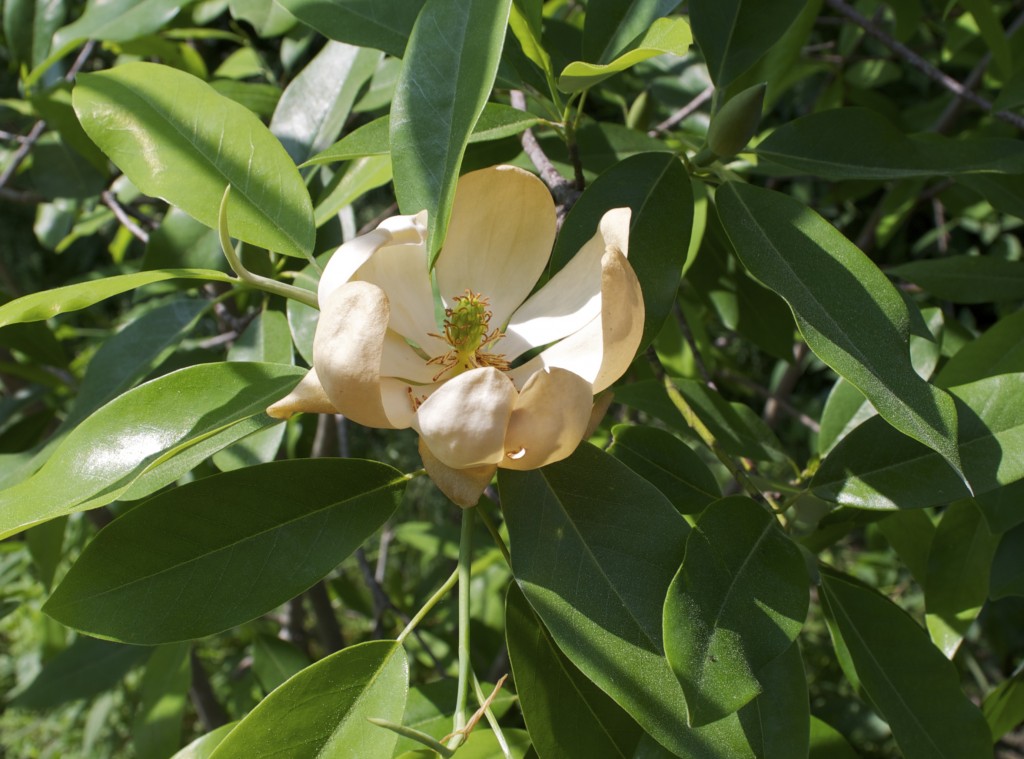
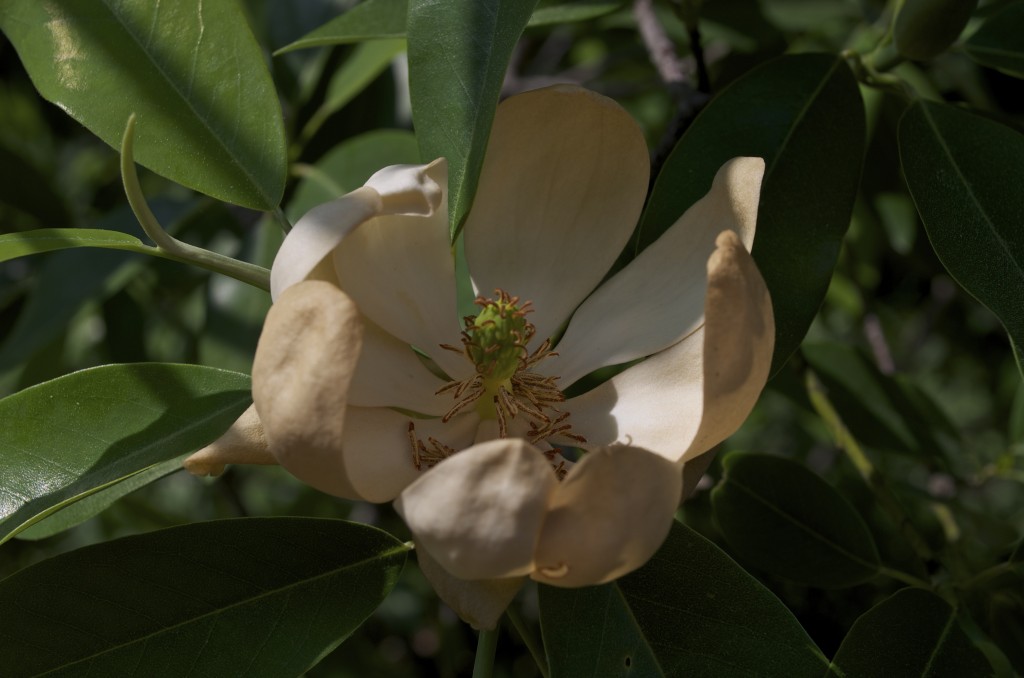 This is growing near the pond at Centennial. It’s native to the southeastern U.S…. The inner bark is mildly scented, like bay laurel. The flowers have a vanilla scent. This species was collected in 1678 and sent to England, and was the first kind of magnolia cultivated in England.
This is growing near the pond at Centennial. It’s native to the southeastern U.S…. The inner bark is mildly scented, like bay laurel. The flowers have a vanilla scent. This species was collected in 1678 and sent to England, and was the first kind of magnolia cultivated in England.
Sweetbay Magnolia, Swamp Magnolia, Beaver Tree (Magnolia virginiana)